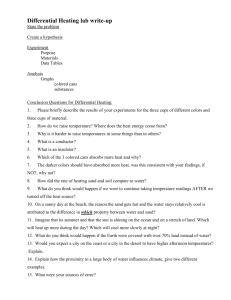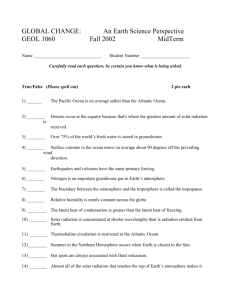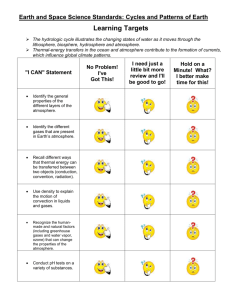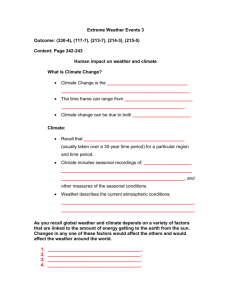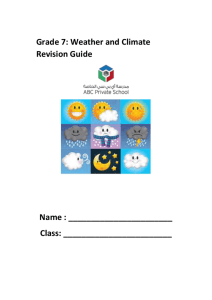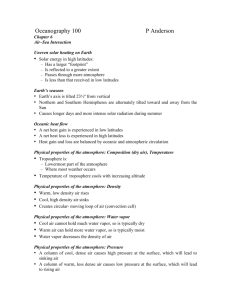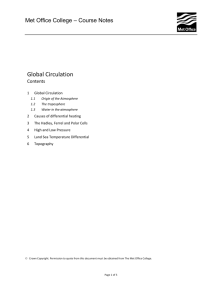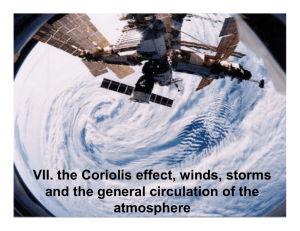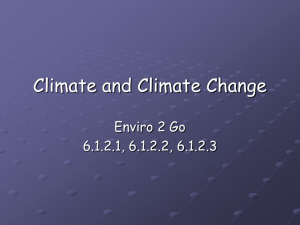Energy in the Atmosphere and Oceans Thermohaline
advertisement
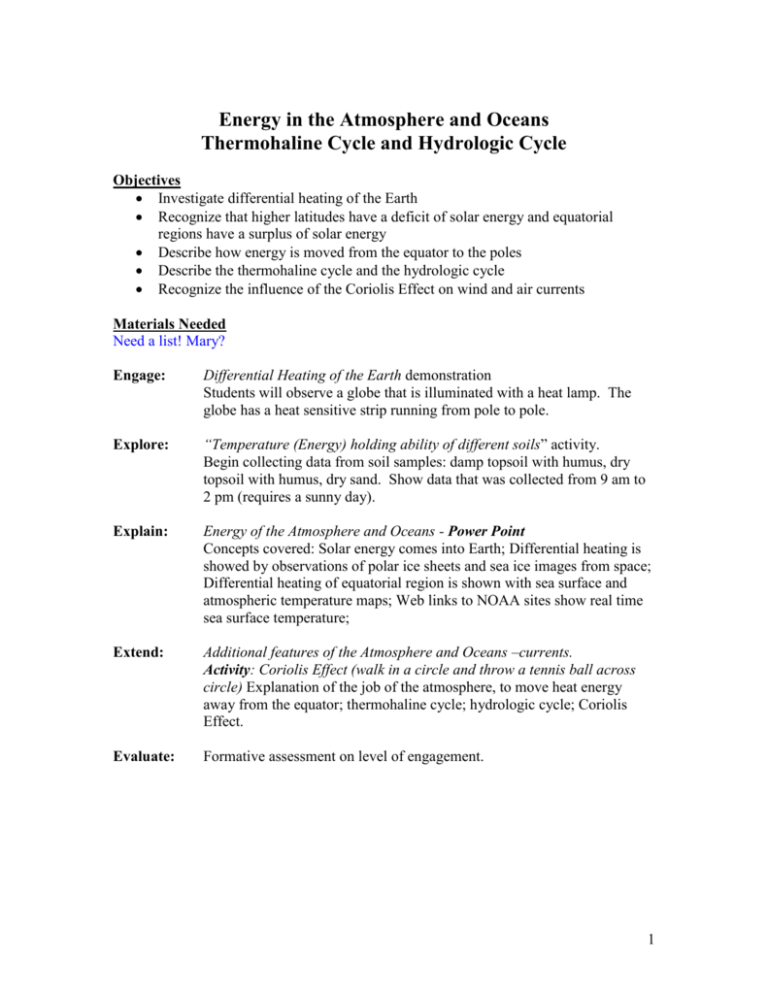
Energy in the Atmosphere and Oceans Thermohaline Cycle and Hydrologic Cycle Objectives Investigate differential heating of the Earth Recognize that higher latitudes have a deficit of solar energy and equatorial regions have a surplus of solar energy Describe how energy is moved from the equator to the poles Describe the thermohaline cycle and the hydrologic cycle Recognize the influence of the Coriolis Effect on wind and air currents Materials Needed Need a list! Mary? Engage: Differential Heating of the Earth demonstration Students will observe a globe that is illuminated with a heat lamp. The globe has a heat sensitive strip running from pole to pole. Explore: “Temperature (Energy) holding ability of different soils” activity. Begin collecting data from soil samples: damp topsoil with humus, dry topsoil with humus, dry sand. Show data that was collected from 9 am to 2 pm (requires a sunny day). Explain: Energy of the Atmosphere and Oceans - Power Point Concepts covered: Solar energy comes into Earth; Differential heating is showed by observations of polar ice sheets and sea ice images from space; Differential heating of equatorial region is shown with sea surface and atmospheric temperature maps; Web links to NOAA sites show real time sea surface temperature; Extend: Additional features of the Atmosphere and Oceans –currents. Activity: Coriolis Effect (walk in a circle and throw a tennis ball across circle) Explanation of the job of the atmosphere, to move heat energy away from the equator; thermohaline cycle; hydrologic cycle; Coriolis Effect. Evaluate: Formative assessment on level of engagement. 1 Homework (Due Friday, June 20, 2008) Final project/Video of a concept learned in class this week 2



